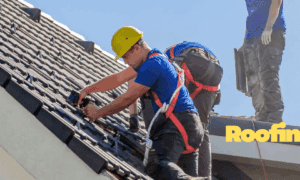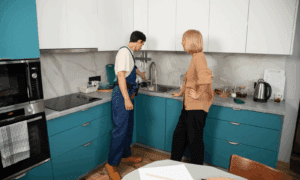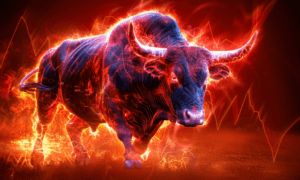Chimneys are a functional component of a home’s heating system and add character and charm to the architecture. Whether you have a traditional masonry chimney or a more modern factory-built one, maintaining it is crucial for safety and efficiency. Let’s look at the different types of chimneys and the materials necessary to Chimney Sweep Charleston SC, repair, and maintain them.
Understanding Your Chimney Type
1. Masonry Chimneys:
- Brick and Mortar: Traditional masonry chimneys are constructed with bricks and mortar. Over time, exposure to weather and temperature fluctuations can cause mortar joints to deteriorate and bricks to crack.
- Flue Liner: Inside a masonry chimney, there is a flue liner. Inspecting the liner for cracks or damage is essential as it is critical in directing smoke and gases out of your home.
2. Factory-Built Chimneys:
- Prefabricated Materials: These chimneys are made from metal, including stainless or galvanized steel. They are factory-built to precise specifications, making them more predictable for repairs and maintenance.
- Inspecting the Firebox: In factory-built chimneys, the firebox and the chimney pipe should be regularly checked for rust, corrosion, or damage.
Necessary Materials for Repair
1. Masonry Chimneys:
- Brick and Mortar: You’ll need a mix and replacement bricks supply to repair deteriorated and cracked mortar joints.
- Flue Liner Repair Kit: If your flue liner is damaged, use a flue liner repair kit designed for masonry chimneys.
- Chimney Crown Sealer: The chimney crown, the concrete or cement top of the chimney, should be sealed to prevent water damage. Invest in a quality chimney crown sealer.
2. Factory-Built Chimneys:
- Chimney Pipe Replacement: Damaged or rusted chimney pipes must be replaced with compatible parts. Measure the diameter and length required.
- High-Temperature Sealant: Use high-temperature silicone sealant to seal any gaps or joints in the chimney pipe. Ensure it’s rated for the temperatures your chimney reaches.
- Chimney Cap: A chimney cap is essential for keeping debris and animals out. Ensure it’s the right size for your chimney.
Maintaining a chimney is essential for the safety and functionality of your heating system. Regular chimney maintenance can also prevent costly repairs down the road. Here are some general maintenance tips to help you keep your chimney in top condition:
1. Regular Inspections:
- Annual Inspection: Schedule an annual chimney inspection by a certified sweep or inspector. They will thoroughly examine your chimney for any issues, such as cracks, leaks, blockages, or creosote buildup.
- Frequent Self-Checks: In addition to the professional inspection, periodically inspect your chimney yourself. Look for signs of damage or wear, like loose bricks, damaged mortar, or visible cracks. Address any issues promptly.
2. Creosote Removal:
- Creosote Buildup: Creosote is a highly flammable substance that can accumulate inside your chimney when burning wood. Schedule regular chimney cleaning to remove creosote buildup. This is essential to prevent chimney fires.
- Use Creosote Remover: Consider creosote remover products, which can help break down and reduce creosote buildup when used as directed.
3. Proper Venting and Draft:
- Ensure your chimney has proper ventilation, allowing smoke and gases to exit your home safely. A blocked or obstructed chimney can cause backdraft and dangerous fumes to enter your living space.
4. Chimney Caps and Dampers:
- Install a chimney cap to keep debris, animals, and rainwater from entering your chimney. A chimney cap also helps prevent downdrafts and reduces the risk of sparks escaping.
- If you have a fireplace, make sure the damper is functioning correctly. The damper should open fully when the fireplace is in use and close tightly when not in use to prevent drafts.
5. High-Temperature Sealant:
- Use high-temperature silicone sealant to seal gaps or cracks in the chimney’s masonry or metal components. This helps prevent water infiltration and ensures the chimney’s structural integrity.
6. Chimney Crown Maintenance:
- Inspect and repair the chimney crown as needed. A damaged height can allow water to seep into the chimney structure. Repair or replace it with a quality chimney crown sealer.
7. Flue Liner Inspection:
- Regularly check the condition of the flue liner inside your chimney. Damaged or deteriorated liners should be replaced to maintain proper ventilation and safety.
8. Use the Right Fuel:
- If you have a wood-burning fireplace or stove, use only seasoned hardwoods for fuel. Avoid burning treated or painted wood, as it can release harmful chemicals and accelerate creosote buildup.
9. Carbon Monoxide Detector:
- Install a carbon monoxide detector near your heating appliance or fireplace to alert you to dangerous emissions. This is a crucial safety measure, especially if you use your chimney for heating.
10. Professional Repairs:
- Only attempt major Chimney Repair Charleston SC yourself if you have the necessary expertise. Hire a certified chimney professional for repairs or renovations to ensure the work is done safely and correctly.
- By following these general maintenance tips and scheduling regular inspections, you can ensure the safety and efficiency of your chimney system, reduce the risk of fires, and prolong the life of this essential home component. Proper chimney maintenance is a wise investment in the safety and comfort of your home.
Properly maintaining your chimney is essential for safety and preserving your home’s aesthetic and functional aspects. Whether you have a masonry chimney with traditional charm or a factory-built flue with modern convenience, understanding your chimney type and having the necessary materials for repair and maintenance is crucial. Regular inspections and timely repairs will help your chimney serve you well for years.



































